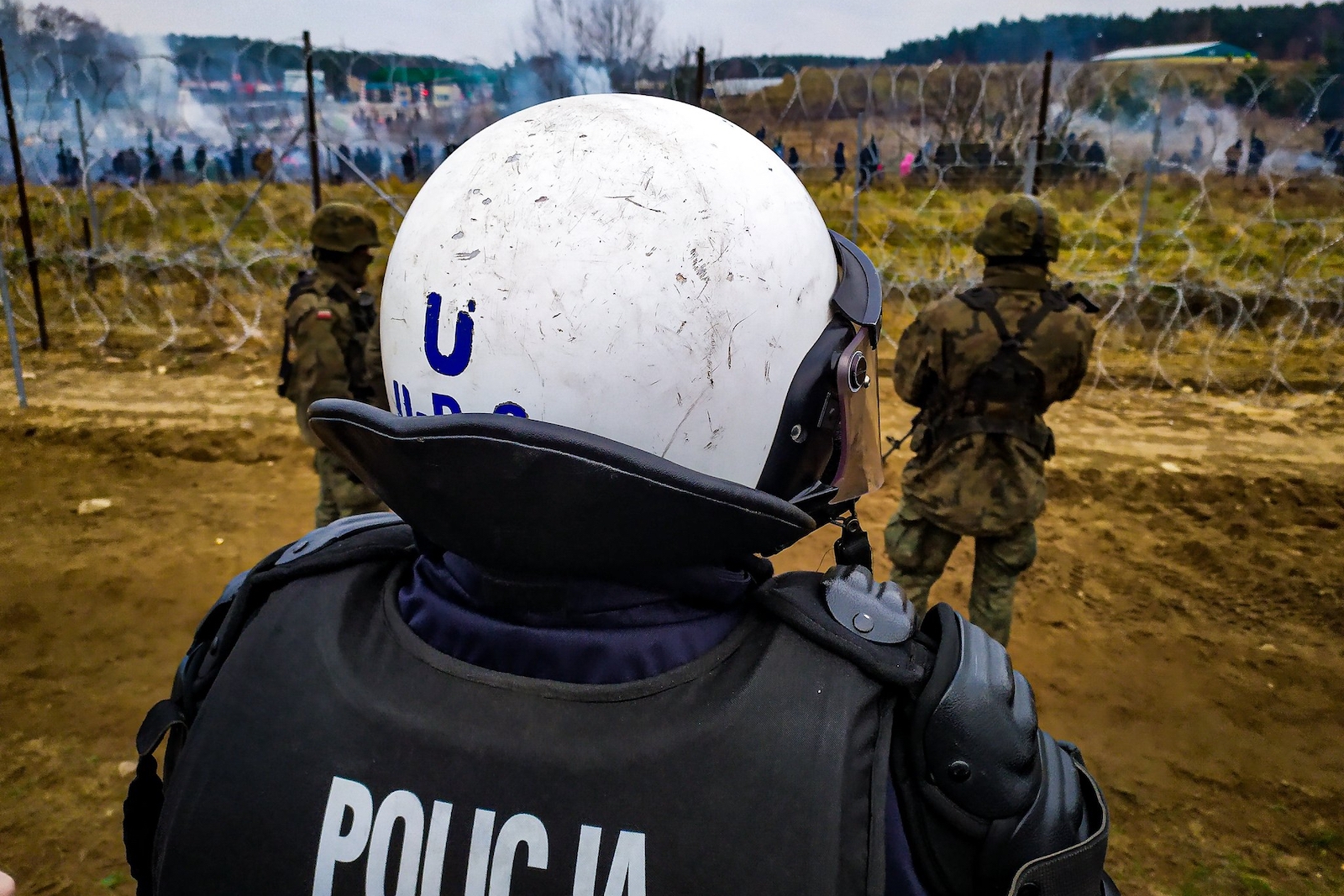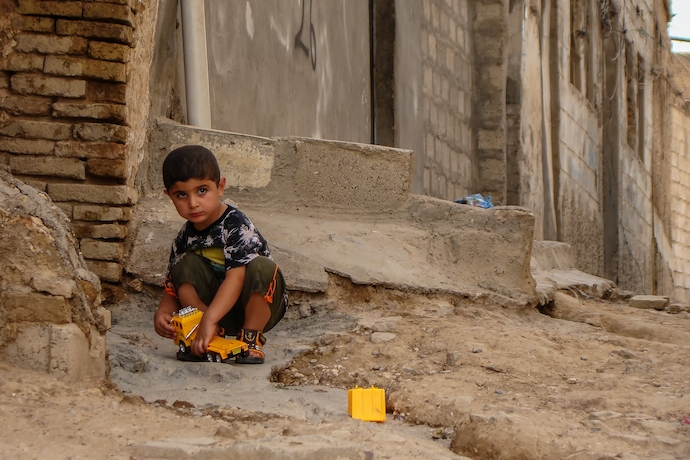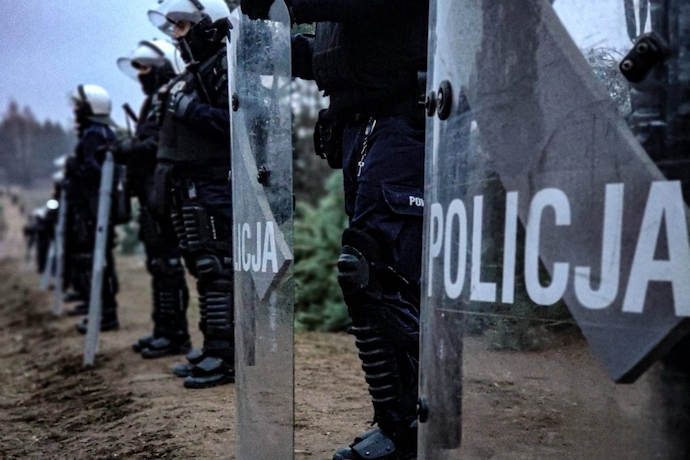
Youth Exodus in Iraqi Kurdistan
Walking through the streets of Iraqi Kurdistan one observes empty streets that were once bustling with young people. These empty streets have concerned politicians from Washington to Minsk, as thousands of refugees have attempted to cross the Belarus border into the European Union.
Conversations among the youth are almost exclusively about leaving for Europe. On November 8, more than 50 young Iraqis left Hajiawa, a city of fewer than 15,000 people. Mass immigration is a striking feature of today’s Iraq at a time of relative peace.
When I told a 17-year-old teenager from Halabja, a city that was chemically bombarded in 1988, it is a risky route and you might die on the way, he replied “even if I know I will die I don’t want to die here.” En mass departure of youth from the city reminds one of when it was razed to the ground three decades ago.
Kurdish migrants came to the world’s attention when thousands of refugees crossed the Belarus border into Poland. It caused a crisis on the eastern European Union border. Polish authorities responded by deploying 12,000 troops on its border with Belarus. Polish Prime Minister Mateusz Morawiecki wrote on Facebook: “The border of the Republic of Poland is not just a line on a map. It is sacred — the blood of Poles was split over generations to protect it!”
The U.S. and the European Union have both accused Belarus of weaponizing immigration. Since June, Belarus has facilitated visa requirements for Iraqi citizens. Minsk has diverted the world’s attention from the country’s domestic affairs to an artificial refugee crisis and have retaliated against the sanctions imposed on it by Brussels.

Migrants leave not because their lives are in danger but because of poor economic conditions. From 2013 to 2017, Iraqi Kurdistan shared a thousand-kilometer-long border with the Islamic State (IS) though it was terror-free as IS suicide bombers targeted capitals throughout Europe and the Middle East. The challenge now confronting the region is not security but economic. The United States and many European states invest in stability and security in Iraq and the region to stop immigration.
Iraqi Kurds leave their homes in large numbers that it resembles that of Syria during its decade-long civil war. Abdulstar Majid, a Kurdish lawmaker in the Iraqi Kurdistan parliament told me earlier this year that close to 37,000 people have left Iraqi Kurdistan to Europe. Many transit Turkey into Europe while others fly to Belarus to enter into the EU.
Migration to Europe from Iraqi Kurdistan is not a new phenomenon. Currently, more than one million Iraqi Kurds are living in different European countries. Most immigrated in the 1990s when the region was drowned in a civil war.
In the past, migrants left Iraqi Kurdistan individually or in groups of two or three but now large groups of 50 to 70 leave together. For instance, in one neighborhood in Saidsadiq, more than 74 young people migrated together on the night of October 20.
On September 19, 420 people left together from Sulaymaniyah, a city with 1.2 million people and the most secured of Iraq’s cities.
Iraqi Kurdistan struggles financially as Baghdad provides only a fraction of its financial needs due to a long-standing conflict between Baghdad and Erbil. Iraqi Kurdistan’s share of the budget is based on its population in relation to the rest of Iraq. Recent immigration will inevitably change the balance against Iraqi Kurdistan as Iraq’s population is projected to be around 100 million by 2050.

A smaller population means less budget, privileges, and rights. Iraqi Kurdistan has been a strong wall against the re-emergence of the Islamic State and one of the few allies of the United States left in the region.
The government is silent because this gigantic demography is a grave challenge to the government. During the 2018 protests, the overwhelming majority of the participants were less than 20 years of age and it was the most violent one. More than 10 teenagers were killed with one being only 13 years old and tens of others injured.
The region has a labor surplus. With a limited amount of employment opportunities, more migrants from the region provide opportunities for others that do not leave. In the long term, migration increases wages as labor becomes scarce. Therefore, Kurdish authorities have every incentive to allow it.
The majority of those leaving blame the government for their miseries. This demographic constitutes a large number of voters. Most would vote against the ruling parties. With this hostile demography gone, the ruling parties can solve this problem without resorting to violence.
With hundreds of thousands of males gone and a similar number of females left, polygamy could once again reemerge. Leaving hundreds of thousands of females without a partner in a society that ties a family or a tribe’s honor to female chastity before marriage could result in some dire consequences.
Although immigration from the Middle East is largely spurred by security concerns, the current trends put economic prosperity at its center. Western presence in the Middle East must focus on building economic and social infrastructure rather than just military capability which could become a threat in the future. The poor economic condition should be viewed as a security challenge and not only a side effect of instability.

